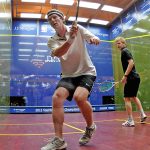Triathlons, kayaking, adventure racing, trail running and BMX bicycling are helping stabilize youth participation in outdoor recreation, possibly because they appeal to Generation Y’s search for social interaction, according to two reports released this month.
A steep drop off in youth participation seen in the middle of the decade has stabilized since the Great Recession among the 6-to-12, 13-to-17 and 18-to-24 age groups, according to the 2011 Outdoor Recreation Participation Topline Report released last week by the Outdoor Foundation.
That report shows traditional on-road triathlon participation rose 90.2 percent from 2007 to 2010 and 39.5 percent last year alone. The next fastest growing sports in order were whitewater kayaking, up 42.4 percent since 2007 and 13.0 percent in 2010; non-traditional, or off-road triathlon, 36.9 percent and -1.8 percent; adventure racing, 31.4 percent and 19.5 percent; sea/touring kayaking, 21.4 percent and 51.9 percent; recreational kayaking, 15.6 percent and 7.6 percent;, trail running, 13.2 percent and 9.4 percent and BMX bicycling, 10.5 percent and 48.8 percent. Even canoeing is reportedly making a comeback with 4.9 percent growth since 2007 and 20.0 percent growth last year, according to the report.
In another piece of encouraging news, the report showed that minorities accounted for 30 percent of the participants in outdoor recreation. While that’s still well below their share of the overall population, it’s up five points since 2007. The report, which is based on 38,742 online interviews conducted in January and February, did not drill down to show in which specific sports minority participation was growing, although a fuller edition of the study to be released in October may do so.
Reactions to the findings were mixed in the outdoor industry.
A separate topline report from the Sporting Goods Manufacturing Association (SGMA), meanwhile, attributes the growth of participation in triathlon and adventure racing to the social platform they provide.
“It appears that this trend is tied to a basic desire to belong to a group and identify with a team or club,” said Steve Furniss, founder of TYR Sport, a manufacturer of products and accessories for swimming and endurance sports. “The triathlon is unique in its ability to couple a person's fitness routine with a strong sense of community and social interaction, particularly for those not inclined to traditional sports.”
The SGMA’s topline report estimates participation in traditional triathlons and adventure racing have risen 63.7 and 39.5 percent respectively since 2009. The report concludes that Generation Y is gravitating toward group exercise and other activities with a large social component.
The bottom line for outdoor recreation, however, is that outside of running, growth sports are not growing fast enough to replace those leaving more traditional outdoor activities such as fishing and car camping, according to The Outdoor Foundation report.
For all participants six years and older, the five fastest-growing activities added 2.8 million participants in 2010. According to The Outdoor Foundation, those activities and the change in participation in those activities were:
- Triathlon (Traditional/Road), up 63.7 percent, or 777,000
- Boardsailing/Windsurfing, up 43.4 percent, or 489,000;
Triathlon (Non-Traditional/Off Road), up 39.5 percent, or 263,000; - Kayaking (Whitewater), up 34.6 percent, or 473,000; and
- Bicycling (BMX), up 30.8 percent, or 828,000.
Participation in the five most popular outdoor activities, however, declined by 796,000 despite the addition of 5.5 million runners and joggers. Those activities and the change in the number of people participating in those activities compared to 2009 were:
- Running/Jogging, up 12.6 percent, or 5.5 million;
- Bicycling (Road/Paved Surface), down 2.0 percent, or 820,000;
- Fishing (Freshwater/Other), down 5.1 percent, or 2.1 million
- Hiking (Day), down 0.2 percent, or 76,000; and
- Camping (close to home), down 9.7 percent, or 3.3 million.
The report also helps explain why outdoor specialty shops, which tend to cater to a more affluent demographic, have fared relatively well since the recession. When breaking out participation by income, the report found that participation rates increased four points to 29 percent from 2007 to 2010 among households earning $100,000 or more, while declining two to three points for households in the first, second and fourth income quintiles. Participation rates have been flat in the third quintile.















